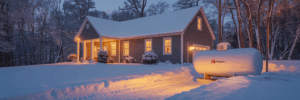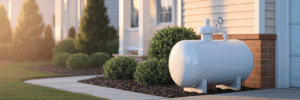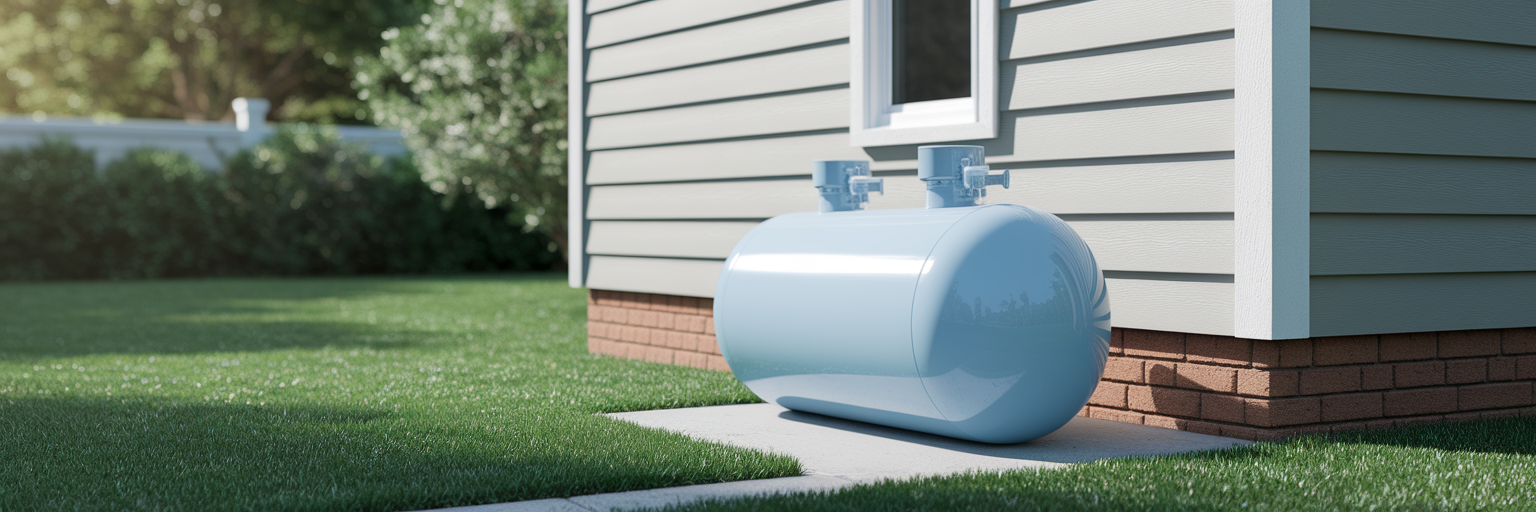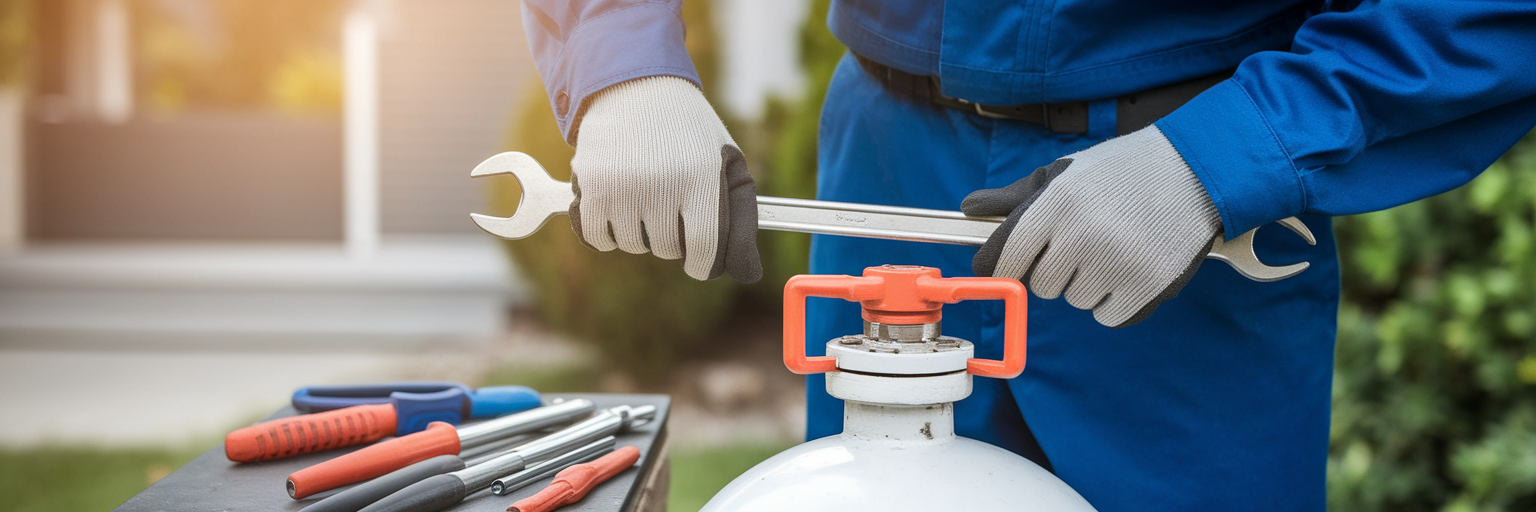
Millions of American households rely on propane for everything from heating their homes to cooking their meals, valuing its efficiency and reliability. This widespread trust is built on an excellent safety record, but that record depends on every homeowner understanding their role in responsible use. Propane is a clean and dependable fuel that supports energy independence for many families, powering furnaces, water heaters, and stoves with remarkable consistency.
While propane is exceptionally safe, its properties require homeowner awareness and responsible handling. Think of it like any other utility in your home; understanding the basics is simply part of smart ownership. This article provides actionable propane safety tips for home use, covering leak detection, storage, and emergency response. Our goal is to give you the confidence that comes from knowing your system and how to keep your family safe.
Understanding Your Home’s Propane System
Propane is a clean and efficient energy source that powers countless homes across the country. From cozy fireplaces to reliable water heaters, its versatility makes it a cornerstone of modern comfort. Many families appreciate the energy independence it provides, especially in areas where other utilities might be less dependable. For a closer look at how it can be integrated, you can explore some of our residential propane solutions that homeowners trust.
This reliability is rooted in a strong safety record, which is maintained when homeowners are informed and proactive. Understanding your role in this partnership is the first step. You don’t need to be an expert, but knowing the fundamentals of your system empowers you to spot potential issues early. This guide is designed to provide clear, practical advice to help you manage your home’s propane with confidence.
How to Detect a Propane Leak
Knowing how to detect a propane leak is one of the most important skills a homeowner can have. Your senses are your first and most reliable line of defense. Propane in its natural state is odorless, so a safety odorant called mercaptan is added during production. This gives it a distinct propane gas smell that is hard to miss, ensuring even a small leak is noticeable long before it becomes a serious hazard.
While your nose is a powerful tool, you should also be aware of other clues that signal a potential leak. Keep these signs in mind:
- By Smell: The most common indicator is an unmistakable odor similar to rotten eggs, a skunk’s spray, or a dead animal. If you smell this, act immediately.
- By Sound: Listen for a hissing or whistling noise near a tank, cylinder, or gas line. This sound is caused by gas escaping under pressure.
- By Sight: Look for visual cues like bubbles appearing in wet or soapy water applied to connections. You might also notice a patch of dead or discolored vegetation in your yard near a tank or buried gas line.
You can perform a simple diagnostic check yourself with the “soapy water test.” Mix a 50/50 solution of dish soap and water, then apply it to cylinder connections and valves with a sponge or brush. If you see bubbles forming, it confirms a leak. This simple test gives you a tangible way to check your system. For a complete overview of best practices, we’ve compiled more information on our comprehensive propane safety page.
Safe Propane Tank Storage and Handling
Proper handling and safe propane tank storage are fundamental to preventing accidents before they happen. These rules are not suggestions; they are essential practices based on decades of industry experience and safety research. The most important principle is ensuring that any potential leak can dissipate harmlessly into the open air.
Outdoor Storage Rules
The cardinal rule is simple: always store propane tanks outdoors. Never keep them in enclosed spaces like garages, basements, sheds, or tents. If a leak were to occur indoors, the gas could accumulate and create a significant hazard. Storing tanks outside in a well-ventilated area allows any escaping gas to disperse safely.
Proper Tank Placement and Clearance
Where you place your tank matters just as much as keeping it outdoors. The National Fire Protection Association (NFPA) provides clear guidelines to prevent ignition from nearby sources. These distances are designed to protect your home and property.
| Tank Capacity (Water Gallons) | Minimum Distance from a Building | Minimum Distance from Ignition Sources |
|---|---|---|
| Up to 125 gal | 10 feet | 10 feet |
| 126 to 500 gal | 10 feet | 10 feet |
| 501 to 2,000 gal | 25 feet | 25 feet |
Note: These are common guidelines from NFPA 58 for residential tanks. Always consult your propane supplier and local fire codes, as requirements may vary. Ignition sources include window air conditioners, direct vents, open flames, and outdoor electrical outlets.
Physical Protection and Stability
Finally, ensure your tank is physically secure. It should always be kept upright on a stable, level surface. This position is critical for the pressure relief valve to function correctly in an emergency. Protect the tank from direct sunlight when possible and keep it away from external heat sources. It’s also wise to shield it from potential physical damage, such as impacts from vehicles or falling objects.
Your Emergency Action Plan for a Propane Leak
Knowing what to do for a propane leak can make all the difference in an emergency. If you smell gas or suspect a leak, your response should be immediate and automatic. Follow these steps calmly and quickly to ensure everyone’s safety. Do not hesitate or waste time trying to diagnose the problem yourself.
- Extinguish All Flames and Avoid Sparks. Immediately put out any open flames, including candles, fireplaces, or cigarettes. This next part is critical: do not use any electronics. Avoid flipping light switches, using a telephone, or unplugging appliances, as any of these actions can create a spark and ignite the gas.
- Evacuate Everyone Immediately. Your first priority is getting everyone out of the house or area without delay. Leave the doors open behind you to help ventilate the space, but do not linger.
- Shut Off the Gas Supply (Only If Safe). If you can safely approach your main propane tank, turn the service valve on top of the tank clockwise to shut it off. This will stop the flow of gas. Only attempt this if you can do so without risk.
- Call for Help from a Safe Distance. Once you are far away from the home, use a cell phone or a neighbor’s phone to call your propane supplier’s emergency number and 911. You can find the necessary numbers on our contact page. Do not re-enter your home until a qualified professional has inspected it and declared it safe.
Proactive Maintenance for Long-Term Safety
True safety comes from consistent, proactive habits, not just emergency preparedness. Regular propane appliance maintenance and system checks are the best way to ensure your home remains safe and efficient for years to come. Start by scheduling an annual professional inspection. A qualified technician can check regulators, valves, and connections, ensuring all the essential propane equipment in your system is functioning correctly.
Consider installing propane leak detectors in your home as an additional layer of protection. These devices function much like smoke or carbon monoxide detectors, providing an audible alarm if gas is present. It is also vital to educate everyone in your household, including older children, on how to recognize the propane gas smell and what to do in an emergency.
Finally, a few simple habits can go a long way in maintaining safety around your appliances:
- Keep the area around propane furnaces, water heaters, and other appliances clean and clear of flammable materials like rags, paper, or chemicals.
- Never use outdoor propane appliances, such as barbecue grills or portable heaters, inside your home or garage. They are not designed for indoor use and can release harmful carbon monoxide.
- Regularly check appliance vents and flues to ensure they are not blocked by snow, ice, or debris, which can interfere with proper ventilation.
A Commitment to Home Safety
Your family’s well-being is the top priority, and understanding propane safety is a key part of responsible homeownership. By focusing on proactive prevention, early detection, and having a clear reaction plan, you can use this efficient fuel with complete confidence. Proper storage and regular maintenance prevent most issues from ever arising. Knowing how to recognize the signs of a leak allows for a swift response. And having an emergency plan ensures everyone acts correctly if a problem does occur.
Propane is a safe and dependable fuel when you are knowledgeable and prepared. We believe that an informed homeowner is an empowered one. Use this guide to review your home’s setup, share these essential safety tips with your family, and schedule a professional system check-up if one is overdue. For more insights and tips on managing your home’s energy, feel free to explore our blog.
About Jennifer Whitaker
Propane industry expert and content contributor for MyPropane.com.
View all posts by Jennifer Whitaker →Related Articles

A Homeowner's Guide to Winter Propane Safety
Nov 23, 2025 • 7 min read
Learn crucial steps for maintaining your propane system during cold weather to ensure a secure and comfortable home.

7 Essential Propane Troubleshooting Steps for Homeowners
Oct 8, 2025 • 7 min read
Follow these essential steps to safely troubleshoot your residential propane system and keep your home running efficiently.

